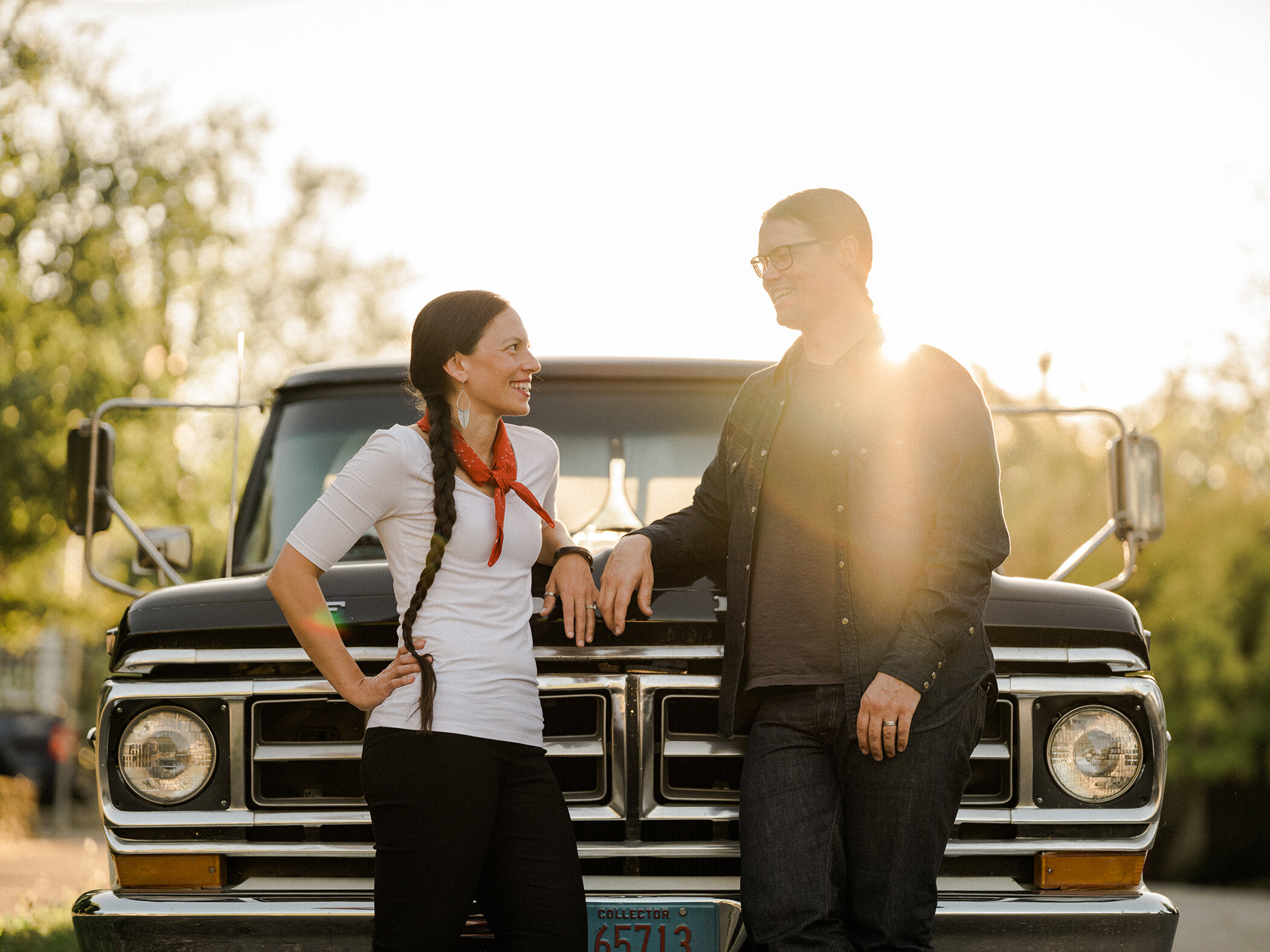
The only indigenous-made denim line in the world, Ginew fuses Native American and classic style.
Written by Wendy Bowman
What began as the makings of a homegrown leather goods business has since morphed into a successful premium apparel and accessories label boasting a denim collection deeply rooted in its founders’ Native American traditions and culture. “Ginew (pronounced Gih-noo) originally grew out of our wedding ceremony,” says Amanda Bruegl (a gynecologic oncologist), who married Erik Brodt (a family medicine physician) in 2010. “We wanted to give a more meaningful gift to those who helped with the ceremony, and decided on belts made from our wedding buffalo. One thing led to another, and we wound up starting a tiny leather goods business in our apartment.”
As for the Portland, Oregon-based apparel label that emerged later on, that’s another story in itself. “While Amanda was training in Houston, she was working long, long hours and we needed a break,” says Erik, adding that led to a trip to the remote El Cosmico hotel in Marfa, Texas. “One frigid February morning, Amanda and Stinky (our dog) stayed in the comfort of the heated safari tent, while I went in search of coffee. I found coffee (maybe too much coffee), and started on a thought experiment about the transition my great-great grandfather made from hunter-gatherer to agrarian.”
Specifically, Erik wondered what type of coat his great-great grandfather would have worn back then; how it would have needed to be utilitarian, functional and sturdy; and what kind of design elements he might have chosen to represent both of the worlds he was living in during his transition. The result? Ginew’s first apparel item—the Heritage Coat—was born from a design sketched on a napkin in a common space at El Cosmico. “We took about two to three weeks to identify all of the necessary components, pattern and factory,” says Erik, “and then made enough for ourselves and some friends, thinking we were done.”
Fate intervened, however, when Lightning and Clutch magazines noticed a post on social media about the pair’s Heritage Coat and invited them to show their attire at Clutch Collection’s heritage-style fashion show in Tokyo. The husband-and-wife duo went on to launch a unisex line in 2014, complete with a collection of jeans, jackets, vests, caps, bandanas, jewelry and more manufactured in L.A., Portland and Seattle using premium materials such as thick selvedge denim, wax canvas and Pendleton wool blanket fabric.
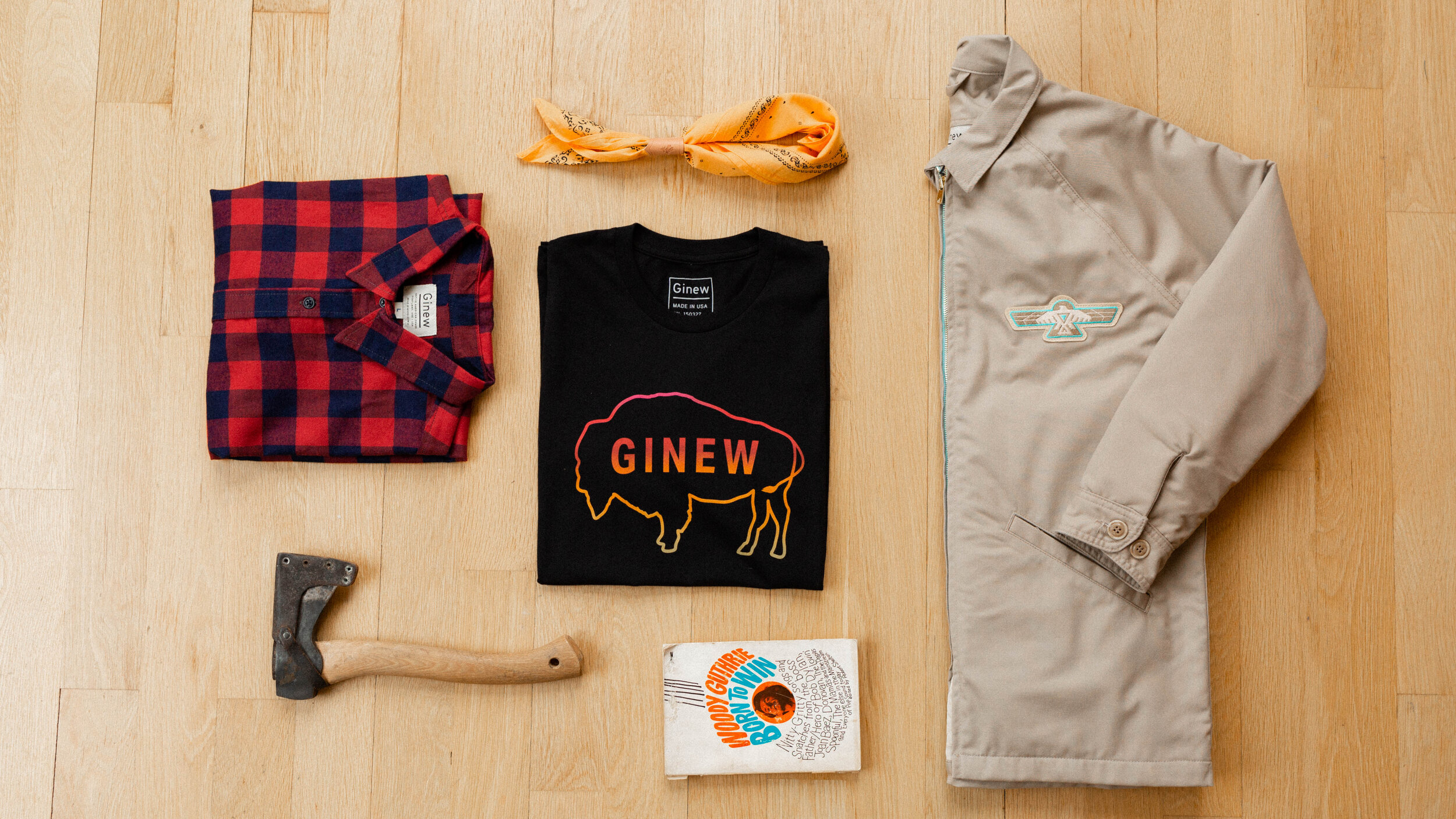
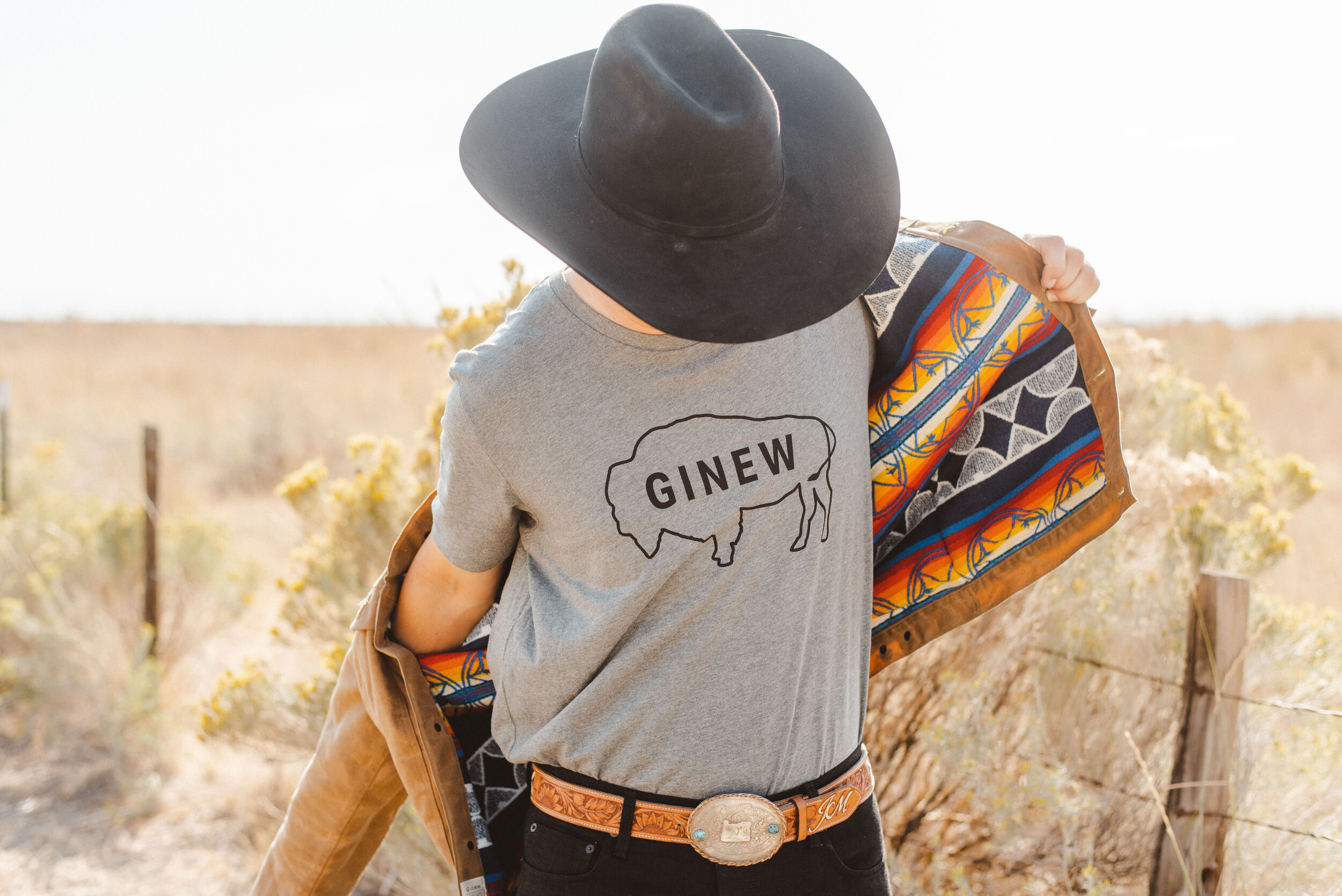
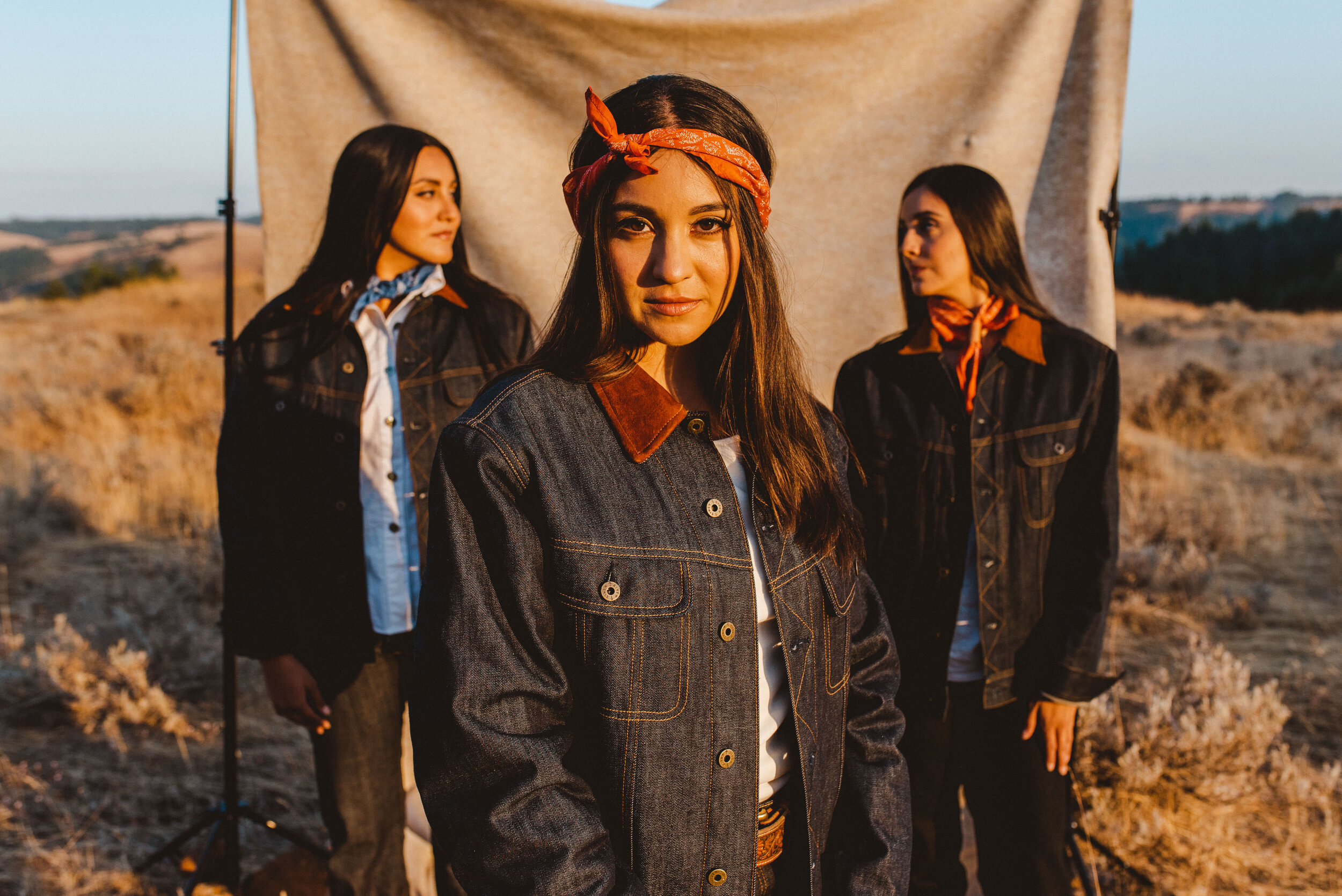
While the pair continue to serve their communities through their clinical practice, and conducting research that aims to improve the health and wellness of Indigenous people, they consider Ginew—part of Erik’s Ojibwe name, meaning “brown eagle”—their passion project. “We didn’t see our Tribes represented in the apparel and accessories available to us and in the market as a whole (Amanda’s Tribes are Oneida and Stockbridge-Munsee),” says Erik, “so we decided to change this narrative and experience.”
Deeply inspired by the lands and places they visit—including the feel, smell, sights and color palettes, along with the stories of their relatives across time—Amanda and Erik design their collection with the aim of increasing Indigenous visibility in a contemporary context. “While many of our items may not appear ‘Indigenous,’ there are elements that are deeply meaningful to us personally, and likewise, meaningful in our communities,” says Erik. “Our approach is a way for us to be who we are—contemporary American-Indian people, wearing clothing that honors this, while not necessarily adhering to the stereotypes of what ‘Indigenous’ clothing or design must be.”
The traditional motifs used in the Ginew collection hail from the Wisconsin-born couple’s tribal values and family stories. “We include select symbols from our Tribes in our designs, so we as contemporary Indigenous people can wear clothes daily that contain elements that are dear and special to us,” says Erik. “Using traditional textiles like deerskin is a way for us to share about our real lives and use a textile that was traditionally the primary clothing textile. We hunt deer every fall, like our families have done for many generations, and in doing so, continue to participate in this tradition. Including deerskin that we have hunted in our clothes is one more step toward honoring and maintaining those teachings, while allowing us to share who we are with others.”
“We include select symbols from our Tribes in our designs, so we as contemporary Indigenous people can wear clothes daily that contain elements that are dear and special to us.”
— Erik Brodt
A particularly notable item in the Ginew line? The Wax Rider Jacket inspired by Amanda’s grandfather, who struggled to obtain employment as a Native welder in the 1950s in the towns neighboring his reservation. “Together, my grandparents made the decision not to relocate to the city, and chose instead to maintain the family on the reservation surrounded by the culture and support of an extended-kinship community,” she says. “This meant grandpa had to travel a long, long way to the city every Sunday and Friday night for the duration of his career. A motorcycle company in Milwaukee (Harley-Davidson) hired him, and this is how he supported our family. It was his dedication to our family and culture that he taught us in these actions, and to honor him, we designed the Rider Jacket to include these traditional values.”
Lately, Amanda and Erik have been busy perfecting their denim jeans offering, as well as launching collaborations with other Native American artists and designers. Coming up: Look for the pair to introduce highly durable T-shirts and sweatshirts based on clothing from Erik’s collegiate athletic days that he still wears to this day. “This past summer, we realized the garments had been in rotation in his closet for over two decades and are still in fantastic shape,” says Amanda. “We recreated the cuts and (most importantly the fabrics) and had them cut and sewn in a small, meticulous family factory known for their premium knit manufacturing. It’s exciting for us to have these garments emerge in the setting of a contemporary Native context.” In other words, apparel with just the type of sturdiness and roots to Western-style dressing that John Wayne might don in the present-day.
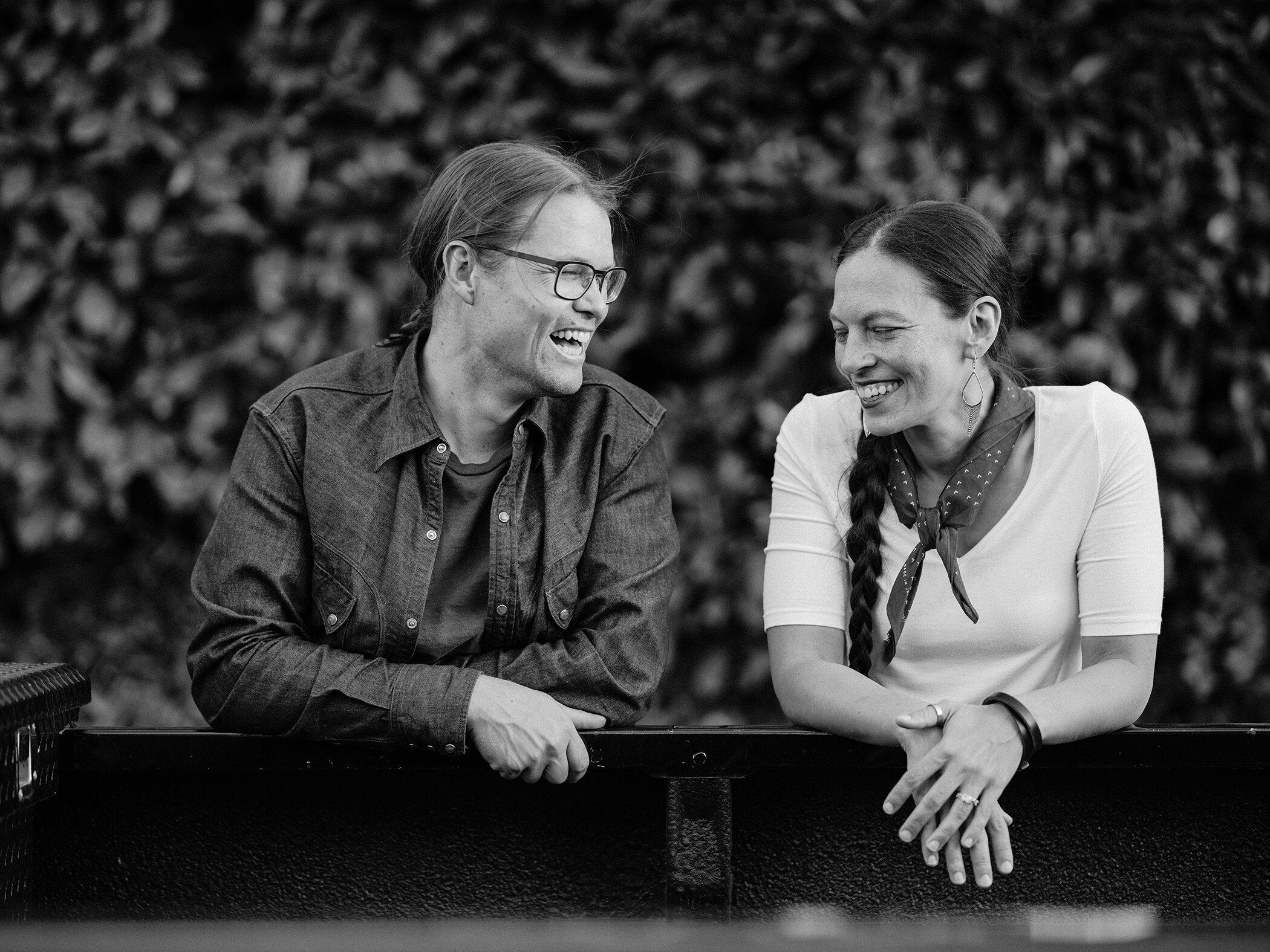
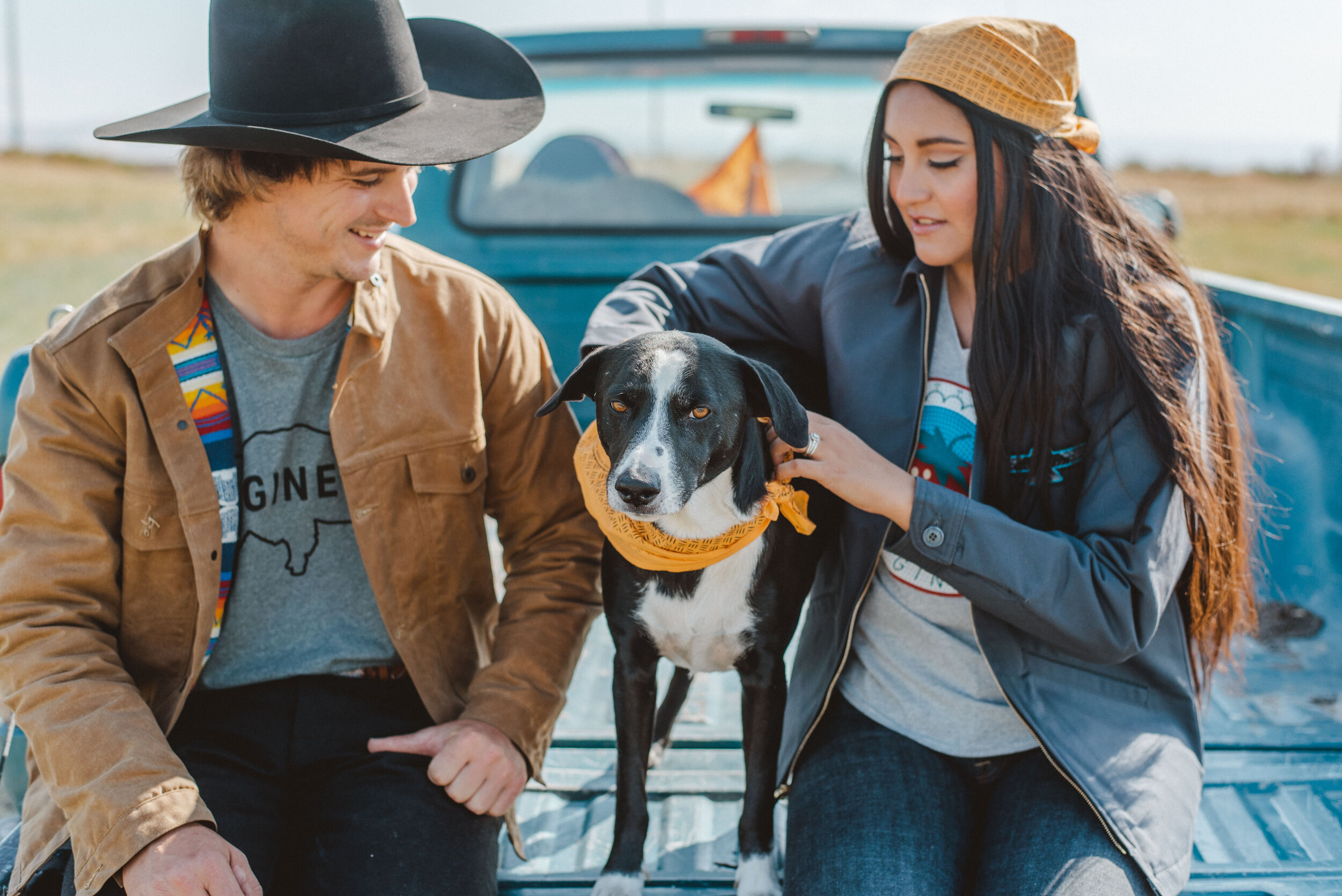
Photographs here and on home page by Sean Carr (except where noted)


